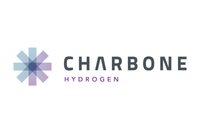Western Canadian oil companies have seen the price of their crude drop on the back of a lack of pipeline outlets, growing North American production and unplanned refinery shutdowns. Is this decline likely to continue?
Increasingly tight export pipeline capacity and surging production from low-cost Alberta bitumen projects will keep Canadian crude oil prices volatile for the rest of the decade, according to a new report from energy researcher Wood Mackenzie.
The assessment comes at a pivotal time for the Canadian oil market: both the Albertan and federal governments are scrambling to find a solution to the deep price discounts affecting the country’s heavy crude oil, Western Canadian Select (WCS).
Western Canadian oil companies have seen the price of their crude drop over recent years as a result of a lack of pipeline outlets from landlocked US markets, growing North American production and unplanned refinery shutdowns.
What is the “Canadian discount”?
Canada both exports oil (from the west) and imports oil (from the east), and as a result of a large surplus of export material, a gap has emerged between what Canada pay for imports and what it receives for exports. This so-called “Canadian discount” has in the past surged to spreads of more than $60 per barrel; however, that amount has recently narrowed to around $15 per barrel.
Wood Mackenzie states in its report that although new infrastructure is being built, the export capacity of Canadian crude will remain tight as production from the country’s oil sands and from North Dakota’s Bakken region in the US continues to increase. Even Canadian synthetic — a partially upgraded bitumen product that has historically carried a significant premium to West Texas Intermediate (WTI) — is trading only a touch above its American peer.
“While temporary pipeline issues have recently eased the sharp decline of Canadian crude prices, we expect prices to remain volatile for the rest of the decade,” stated Mark Oberstoetter, an upstream research analyst for Wood Mackenzie.
Oil sands still an attractive investment
The firm forecasts that non-upgraded bitumen production will grow by 540,000 barrels per day by 2015 and notes that 72 percent of that output “will be from sanctioned projects that breakeven below US$60″ per barrel.
And, according to Oberstoetter, almost three-quarters of this projected rise in production is expected to start up in the next two years. That means that as things stand, these projects are well insulated from weaker crude prices and therefore have little risk of being deferred.
“What our analysis shows is that point-forward economics for the vast majority of oil sands projects planned to start-up between now and 2015 are attractive,” he said in the report. However, he added that the current decline in discount is likely to be short-lived as major new pipelines aimed at moving product from Alberta to refineries are taking longer to be approved and constructed, while production from areas such as the Bakken is rising.
Companies will likely invest $22.3 billion this year to develop Alberta’s bitumen reserves, and much of this new production is expected to flow east as refineries in Ontario and Quebec source feedstock domestically, rather than purchasing offshore supply at higher premiums, according to the Canadian Association of Petroleum Producers. Production growth will also be centered on displacing imported supplies, with much of the crude flowing south to the US Gulf Coast and east to Asian markets.
Further, more than 2 million barrels per day of new pipeline capacity is expected to connect Western Canada to the Gulf Coast over the next three years, Bloomberg quoted ITG Investment Research as predicting. However, that is assuming that these pipelines are approved and actually get built.
While a declining discount might not present too much of a hurdle for producers that are able to turn a profit at low, break-even levels, most will struggle and will face forced slowdowns — or even project cancellations — as a result of a glut of new production and steeper discounts.
Discount remains a concern
Although a number of projects have been able to go ahead as planned, a volatile or widening Canadian crude discount remains a concern. Charles St-Arnaud, an economist at Nomura Securities International, told The Globe and Mail that Canada loses as much as $2.5 billion in revenue each month when the difference between domestic oil and the international benchmark is around $50 per barrel; investment bank PPHB Securities estimates a similar amount of loss. With production still on the rise, these figures are almost certainly conservative, but they are also an effective yardstick in measuring the far-reaching effects of a widening discount.
This spread has also meant that (depending on what the discount is at any give time) oil sands producers have had to export more product to pay for each barrel of refined product being imported into the country. While this gap has narrowed over recent months, the cost differential has led to a tightening of profits. A Globe and Mail article notes that almost half of Canada’s petroleum export revenue is now helping to pay for petroleum imports.
Industry optimists have long hoped that new pipelines will ease the gap between Canadian heavy crude and WTI, making expansion in the oil sands more financially sound. However, considering the recent light oil boom in areas such as North Dakota, excess oil is likely to linger within the market over the short term.
How will the discount affect investors?
The energy sector has its hopes set on large pipeline projects being given the go ahead; however, investors are beginning to feel uneasy, especially due to the fact that TransCanada’s (TSE:TRP,NYSE:TRP) Keystone XL network still requires approval from the US State Department.
Canadian producers have already counted on winning a larger share of the US market to fuel oil sands expansion and development, but if projects like Keystone continue to be held back, or are eventually denied, these companies are going to have a tougher time securing investment — especially if the Canadian discount to WTI widens further.
“It’s fair to say that development has already slowed because of the discount,” said Robert Schulz, a business professor at the University of Calgary, in comments to Bloomberg. “Companies are certainly going to wait and see what the decision on Keystone is before moving ahead with development.”
Investors will need to take a more conservative approach when sourcing out producers in the oil patch; for example, they will need to: conduct thorough research; keep abreast of all developments in crude transportation projects; and remain aware of an increasingly volatile Canadian discount. That said, if these projects come to fruition, oil sands producers will likely find eager buyers among refiners on the Gulf Coast. Until now, many of these refiners have invested billions of dollars to be able to handle heavy oil, and most are unwilling to turn their back on Canadian producers.
Investors will be adopting a “wait-and-see” approach to see how things pan out over the short term, but once these crude transport project decisions are made, well-placed majors and juniors that are able to lock into transportation networks will prosper.
When taking demand fundamentals into account it is also important to remember that supply usually catches up after each new pipeline and refining capacity expansion. While that bodes well for producers’ and companies’ bottom lines, it also suggests that a price differential between Canadian and US oil prices is here to stay. There are ways to benefit from this situation, but given the scenario’s complexity, only informed investors will be able to take advantage.
Securities Disclosure: I, Adam Currie, hold no direct investment interest in any company mentioned in this article.






